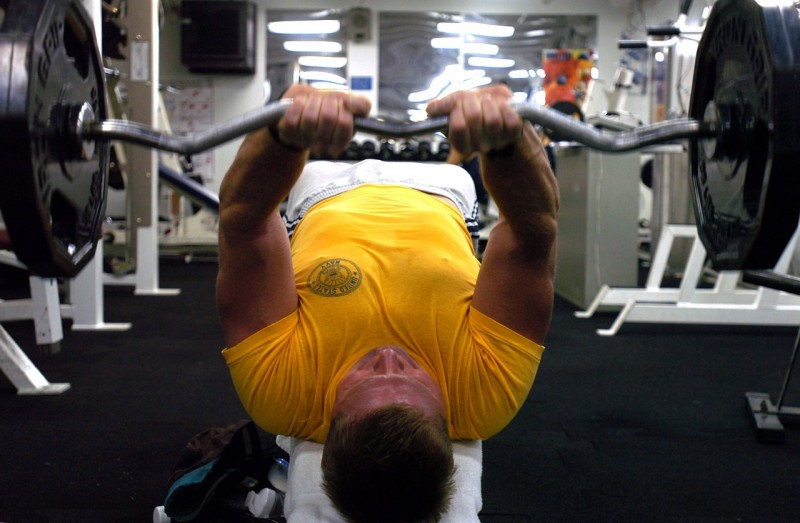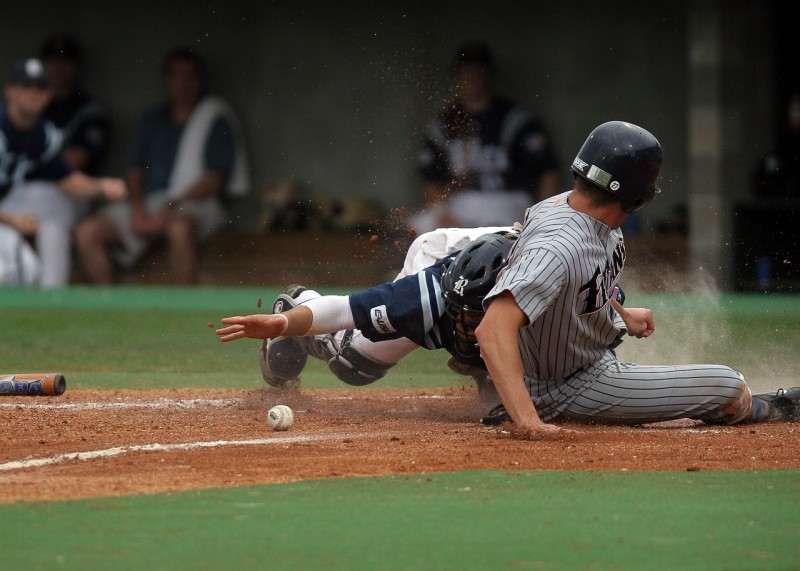
We have come across a generational boom with the recent advances in technology and the increase in their availability. What was once a pipe dream is now affordable enough to be accessible to even some NAIA schools. We have spent countless hours learning about heart rate monitoring, GPS, IMA, velocity measuring devices, force plates, HRV, pressure mapping, and hundreds of other very important and impactful things. There are now academic programs in this country that will teach someone to be able to utilize these technologies and how they can or should be applied to sport. This application of science is giving insights into sports performance, training, and enhancement at remarkable rates.
There is a problem, though. It seems as though we have forgotten and lost something: S&C is an art and a science. The science has been vastly improved but the art is seeming to die off. There is a pendulum that has swung massively to one side. All that people care about anymore is the fact of what is going on and what the loads and predictions are.
Ashley Jones recently did a podcast with Ron McKeefery that summed it up well:
The sports scientist was looking at the GPS data and said to the head coach, "Hey, we have got to get 12 out of there." The head coach looked at him and said, "For one, he has a name and it's John Smith. For two, why do you say he needs to get out of there?" The sports scientist said, "Because 12 has only done anything on three out of the last 8 possessions." The head coach got pissed and said, "Do you know what he did on those three possessions? He scored each time and is the reason we are winning the game so you can take that and shove it up your arse."
Now it seems that those coming in to the profession spend more time understanding how to manipulate the interactions of external loads, internal loads, and HRV response than learning how to do proper lifting or running technique — and God forbid a change of direction. I have all too many times seen someone cheering an athlete on and telling them that they were doing a great job on a clean while they never even once looked at the technique. They were simply watching the velocity readout.
LISTEN: The CVASP Podcast: Episode 15 with Dr. Bryan Mann
The most basic way to improve performance is through technical improvement in the sport, and to do that you need to have technical improvements in sprinting, jumping, cutting and lifting. The read outs that we look at only give us a quantity of movement score: how much, how fast, how long. The quality is the job of the coaches eye. If we forget and move away from that, we are going to forget and move away from results and effectiveness.
If the strength training technique isn't good, then how do you know if an improvement in the lift really did go to the transfer to the field? We often speak of the concept of technical failure. This concept means that you cease the exercise when the technique breaks down. More and more often I notice that technical failure for many of today's coaches start during the warmups. They don't coach technique, they coach the quantity score and negate the quality. The training effects often become negligible from the strength training and then they harp that the strength training is pointless because there was no transfer. There squats didn't cause an improvement in speed or power. Well, guess what? Sometimes they didn't even technically squat. They did a squat morning, sometimes with a rounded back. So can you say the squat didn't transfer? No, but you can say the round backed squat morning did not!
What can be done about this? Well, I'm honestly not sure. I do have some ideas, but who knows if they are any good. I think that for one, we need to make the sports science dedicated positions. If all of the education and continuing education needs to be on keeping up with the technologies, then there is no time for them to refine their coaching abilities. The other thought that I have is to not have younger coaches do the sports science positions. It is easy to learn the science and techniques behind the technologies. To figure out the implementation in the best manner possible takes time and it also takes perspective. For the younger coaches I think they need to spend the most time on the floor coaching and perfecting technique of the athletes. This ensures that they will know what to do when it is time to go to the next step. It also ensures that they understand what the movements are and what they should look like before they are layered with technology.
I also think that by starting out too young with the technology, we don't have the perspective to see the forest for the trees. They zero in on one area and they turn the world to fit that view. Remember the example from Ashley Jones? All the kid was doing was looking at what the GPS said and not what the end result on the field was. The relationships between things must be seen and understood. How adaptations occur must be seen and understood.
For instance, those of us who have been around for a while know about the supercompensation curve, and how to maximize some adaptations with it. If you push the athlete hard for quite some time, the athlete will start to over reach, then you back off and then see a greater adaptation or supercompensation. What should happen to things such as HRV is that they should decrease for a while, then hit a point where it tanks, then the athlete backs off and there is most likely a great improvement in not only the HRV but the other capabilities of the athlete (power, strength, etc). If someone doesn't know what typically happens during the training and they begin monitoring HRV, as soon as they see a decline, they start to freak out and then greatly reduce training volume and intensity (while this is completely appropriate during the in-season, I feel it is completely inappropriate in the off-season). Instead of letting the supercompensation curve from the general adaptation syndrome model run its course, the practitioner alters everything and never allows this to occur. For those who are experienced and then know what to look for, they won't freak out but rather know what is going to happen.
I remember Martin Bingisser talking about training with Dr. Bondarchuk. When he and his teammates felt beat to hell, Dr B got excited; he knew what was getting ready to happen and it was going to be great. If Dr B were to start using HRV, it would simply be a tool for him to know exactly when the changes he wanted to see occur. In the untrained person's hand they tend to over correct because they want to maintain homeostasis.
I even look back on my early career. All too often I jumped in with both feet and completely changed things based off of a new technology. At one point with the soccer team, we were doing killer runs: pyramids, shuttles, etc. It was way too lactic, but we still got great results as shown by our conditioning test which at the time was the beep test. One year we got the Polar Heart Rate monitoring system. At that moment I completely shifted gears and changed the entire program to be based off of heart rate and to be in whatever zone I wanted them in. When I changed over to the new system of training, our improvements decreased. If I were to have just kept doing the same running I was doing with the monitoring of the heart rates—looking at heart rate recovery, peak heart rates, etc—with the same conditioning program I had been running, I may have seen some places to fix, sure. I also may have found out that the program was not that bad to begin with.
In fact, later I started to do everything based off of max aerobic speed (MAS) instead of worrying about heart rate zones. The first year that I did this (and it continued with every freshman class after the fact), there were tremendous improvements in the tests. Why? Well, I focused on the distances and knew what I should be seeing with the heart rates. I made small changes to my plan based off of what I knew would and should happen. I remember on doing extensive runs, I expected their heart rate to be around 70-75%, but when I looked at the team system they were all over 90%. What did that mean? Change the entire plan back to heart rate only? No. It simply meant I needed to reduce the running intensity (percent of MAS) a bit and their heart rates were back down where I wanted them.
Once the coach has been around for a while, knows how to coach, and does a damn good job at it (and they know what to expect and what they should be SEEING happen in the athletes during a session and after a series of session) they're ready to start adding in technology.
Also, since everyone is worried about the numbers they seem to forget about the people. Your programming should be science based, but your coaching is a human endeavor. You get a lot more out of people when you get to know them and you learn what makes them tick. The athletes will work a hell of a lot harder for you when they know you and know you care.
I can remember a specific moment working with a corner several years back. He and I went round and round, butting heads all of the time. Then one day after a conditioning session, I asked him about his dad. He and I talked about his dad for about an hour and a half (to be honest with you, I had just read John C. Maxwell's book Everyone Communicates, Few Connect and was trying it out. For more info on this, please see my article on FORM coaching). I found out many things about his dad, his mom, his siblings and other family members. At that point, everything changed. If I said anything, he did it no questions asked. He would make other guys on the team do it. He went from an adversary to a part of my arsenal.
MORE: How To Get Your Athletes to Buy In
Another thing that I think younger coaches need to do is be on the floor with multiple different teams. They need to learn how to coach a broad spectrum of athletes and not only refine the way they teach the movements and explain what's going on, but to learn how to deal with the different types of athletes. A kid who grew up in a country club and a kid who grew up in East St. Louis are two completely different types of people and are going to respond to you differently. It is an art to be able to deal with them and to get both of them on your side.
I don't want anyone to think I'm tech adverse. I just think the pendulum has swung too far. We are too reliant on what a device tells us rather than our own eyes, ears, hearts, and guts. We need to have these to make the technology make sense. If we don't have these, the numbers are essentially arbitrary and meaningless and may cause the athlete to be held back rather than pushed ahead. When the numbers are used appropriately, however, the magic happens.
In closing, the strength and conditioning coach must be an artist and a scientist. He needs to learn them in that order. Few people are so talented that they can only be the scientist and not the artist, or the artist and not the scientist. The goal of me writing this article isn't to kill the science (because God knows I love it), but to swing the pendulum back more towards the middle. We need to have both, and we are getting too far away. The next correction that I can see happening would be the opposite to where all of the science and tech goes away and coaches have to rely only on themselves again. That's not a good option either — let us look for a more balanced approach and be well rounded. If you understand when and what to do with the tech, and you understand the art of coaching, your athletes will become Strong(er) of body because you have become Strong(er) of mind.













The only way to significantly increase the athlete anaerobic system is
sprinting. Elevated strength and conditioning = peak athlete performance
An article in circulation in the network and in the blueprint of the ciriculum on the next Gen of Performance Coaches.
- Thank you,
Former MIZZOU Intern